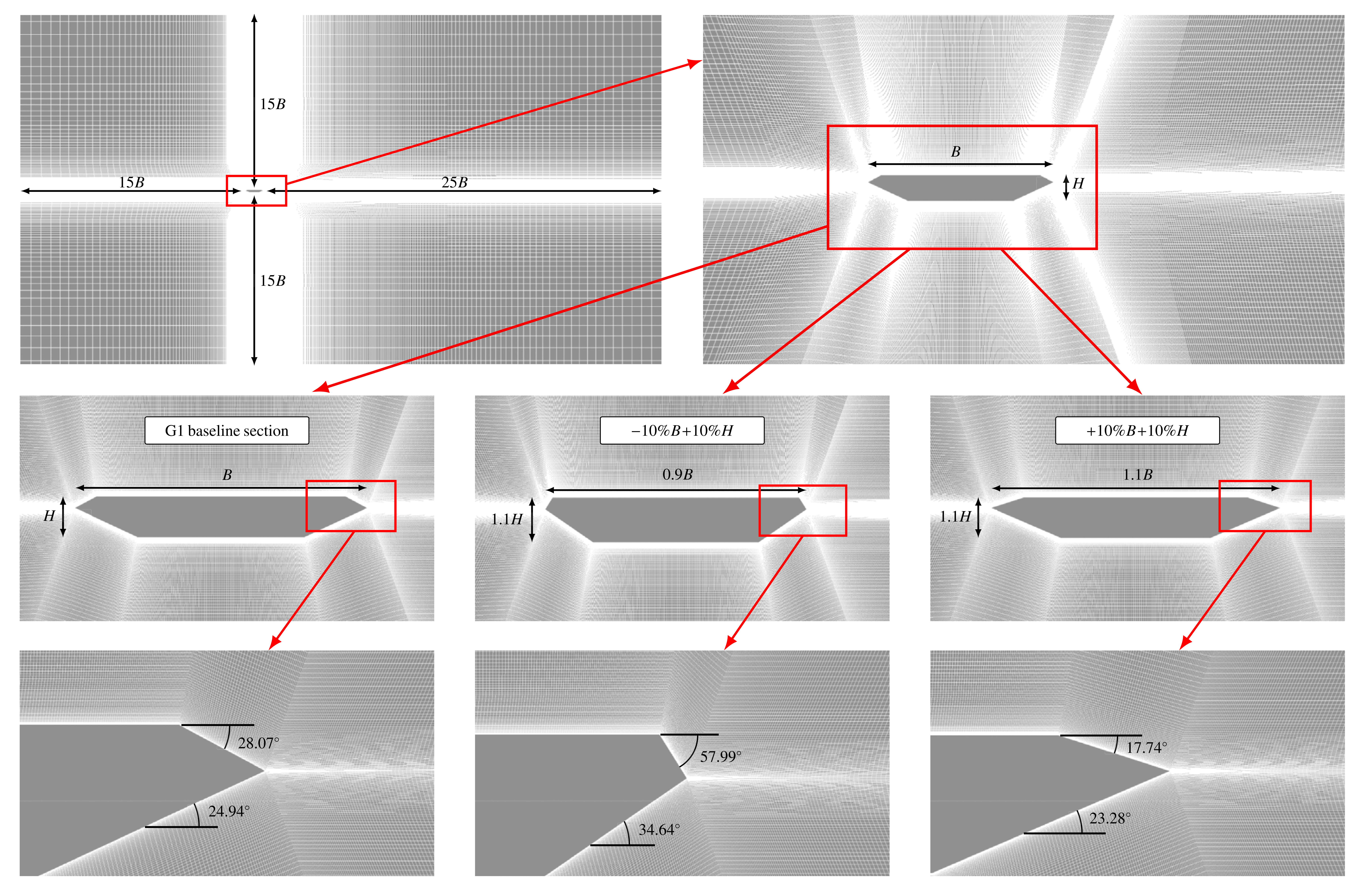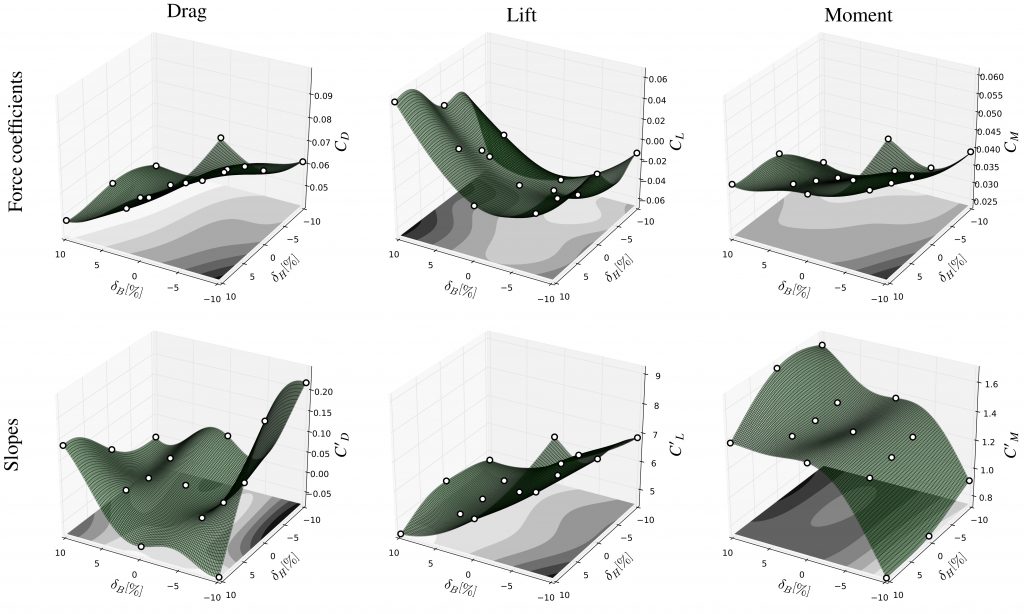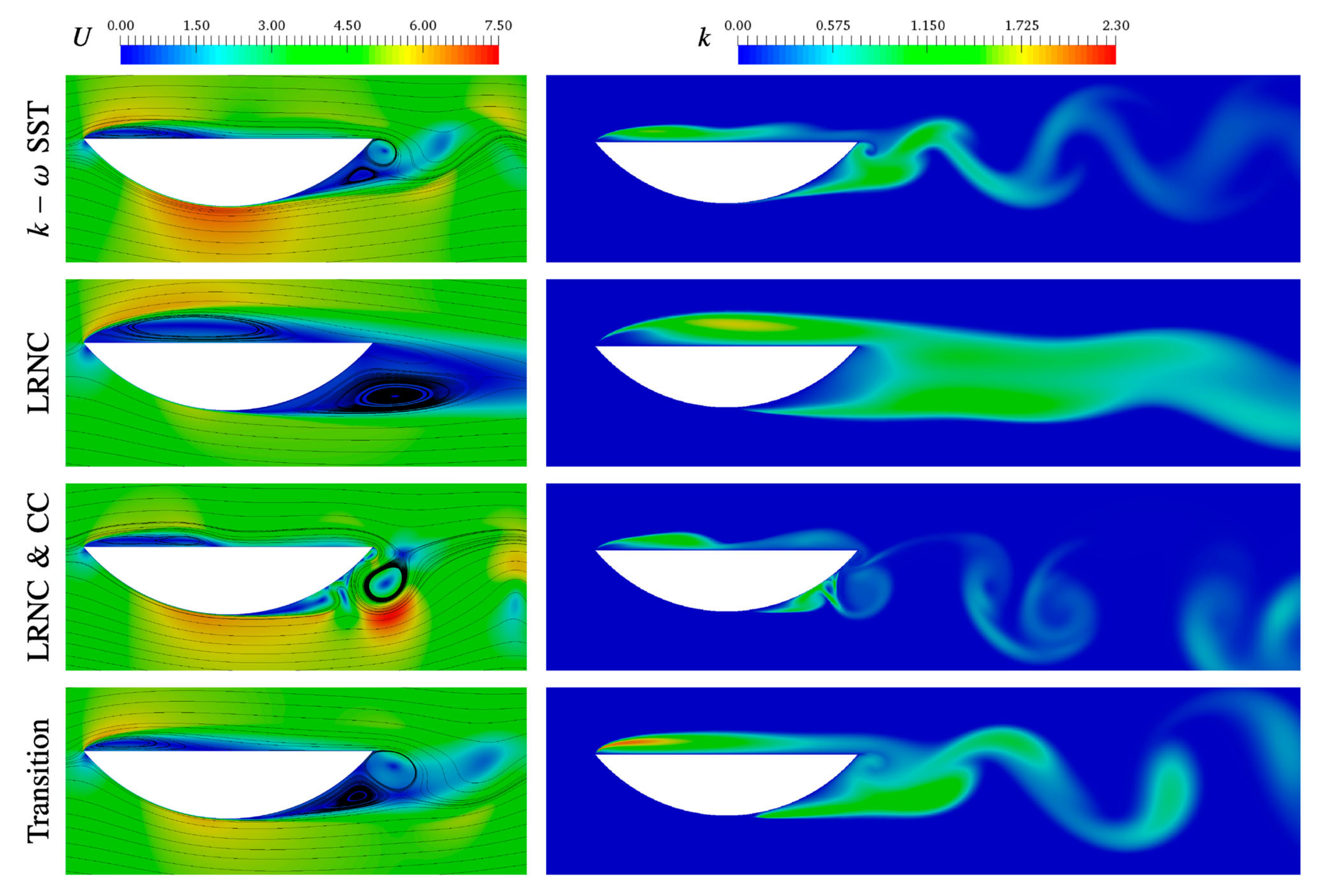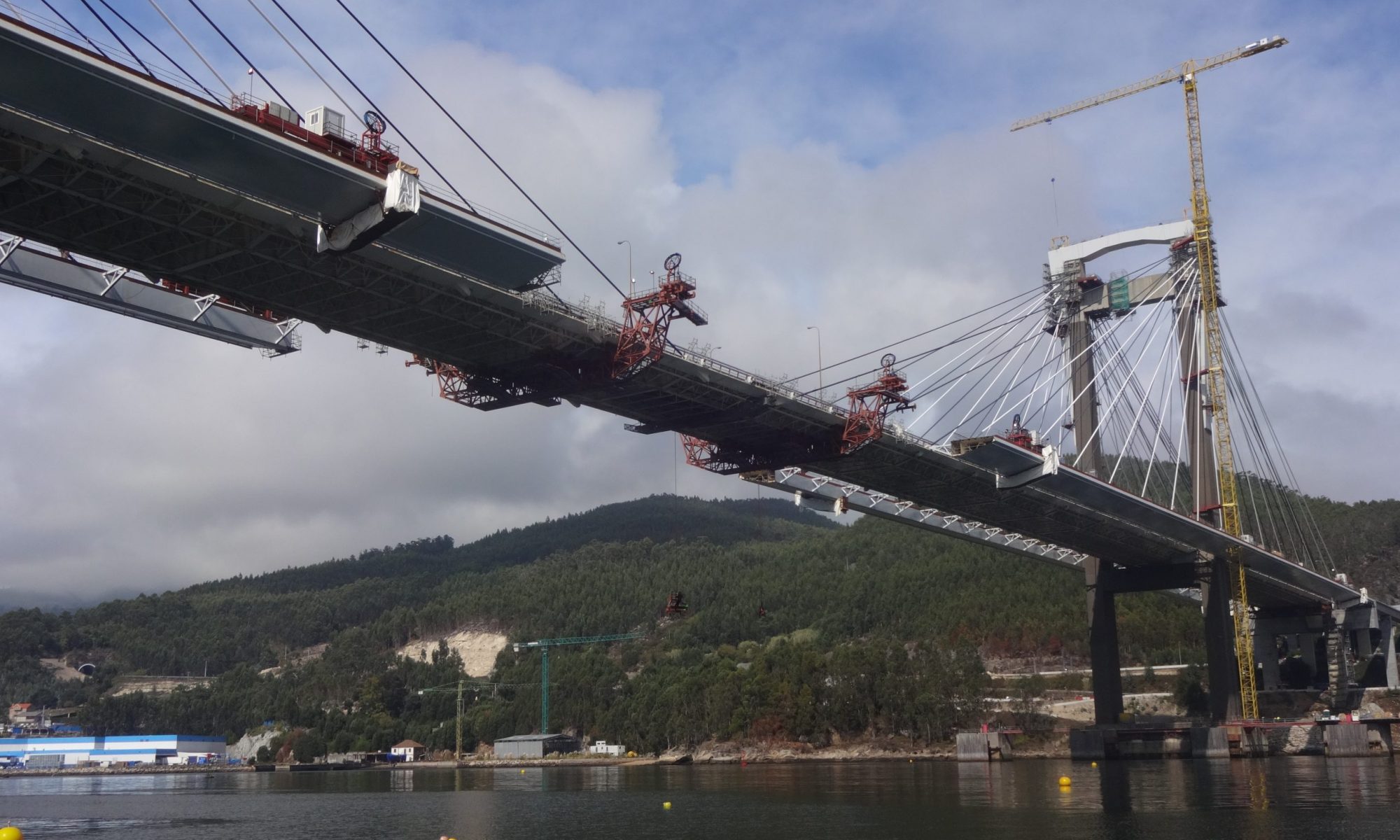The accurate evaluation of wind loads on civil engineering structures is a key issue for their design. The classical approach currently used in the bridge engineering industry for the structural and aeroelastic design of bridges is based on an iterative heuristic process which includes wind tunnel testing. The dependency on experimental techniques for the aeroelastic characterization of the bridge deck cross-section requires a substantial amount of resources, and consequently, the number of potential candidate designs must be limited.
The fast improvements in Computational Fluid Dynamics (CFD) techniques in recent years have led to its use in the industrial field, and consequently, bridge design methods must be updated. I am working on the development of fully numerical strategies to overcome the classical iterative process in bridge deck shape design by using CFD simulations and surrogate models. These schemes permit the exploration of wider design domains and open the door to the implementation of aero-structural optimization approaches.


Civil engineering cross-sections are usually bluff geometries, which may involve some modeling challenges, such as massive flow separation and Reynolds-number sensitivity. Studying the impact of the modeling schemes on the CFD results is very important for its accurate use.

Journal papers
Nieto F, Cid Montoya M, Hernández S, Kusano I, Casteleiro A, Álvarez AJ, Jurado JÁ (2020) Aerodynamic and aeroelastic responses of short-gap twin-box decks: box geometry and gap distance surrogate based design. Journal of Wind Engineering and Industrial Aerodynamics, 201:104147.
DOI: j.jweia.2020.104147
Cid Montoya M, Nieto F, Hernández S, Kusano I, Álvarez A J and Jurado J Á (2018) CFD-based aeroelastic characterization of streamlined bridge deck cross-sections subject to shape modifications using surrogate models. Journal of Wind Engineering and Industrial Aerodynamics, 177:405-428.
DOI: j.jweia.2018.01.014
Cid Montoya M, Nieto F, Álvarez A J, Hernández S, Jurado J Á and Sánchez R (2018) Numerical simulations of the aerodynamic response of circular segments with different corner angles by means of 2D URANS. Impact of turbulence modeling approaches. Engineering Applications of Computational Fluid Mechanics, 12(1):750-779.
DOI: 10.1080/19942060.2018.1520741 [Open Access]
Conferences
Nieto F, Casteleiro A, Cid Montoya M, Hernández S, Kusano I, Jurado JA, Fontán A, Alvarez JA, Rapela C (2019) “Surrogate-based characterization of the aerodynamic response of twin-box decks considering changes in the box geometry and gap distance” The 15 th Int. Conference on Wind Engineering 2019, September 1-6, Beijing, China.
Cid Montoya M, Nieto F, Kusano I, Álvarez, A. and Hernández S (2017) “Application of surrogate models in the characterization of the aerodynamic response of streamlined bridge decks” EACWE 2017. The 7th European-African Conference on Wind Engineering. 4 -7 July, Liege, Belgium.
Nieto F, Cid Montoya M, Álvarez A, Hernández S and Jurado J Á (2016) “Numerical simulations of the aerodynamic response of 2D circular segments by means of URANS” AFM2016: 11th International Conference on Advances in Fluid Mechanics. 5-7 September, Ancona, Italy. Invited presentation
DOI: 10.2495/AFM160051
